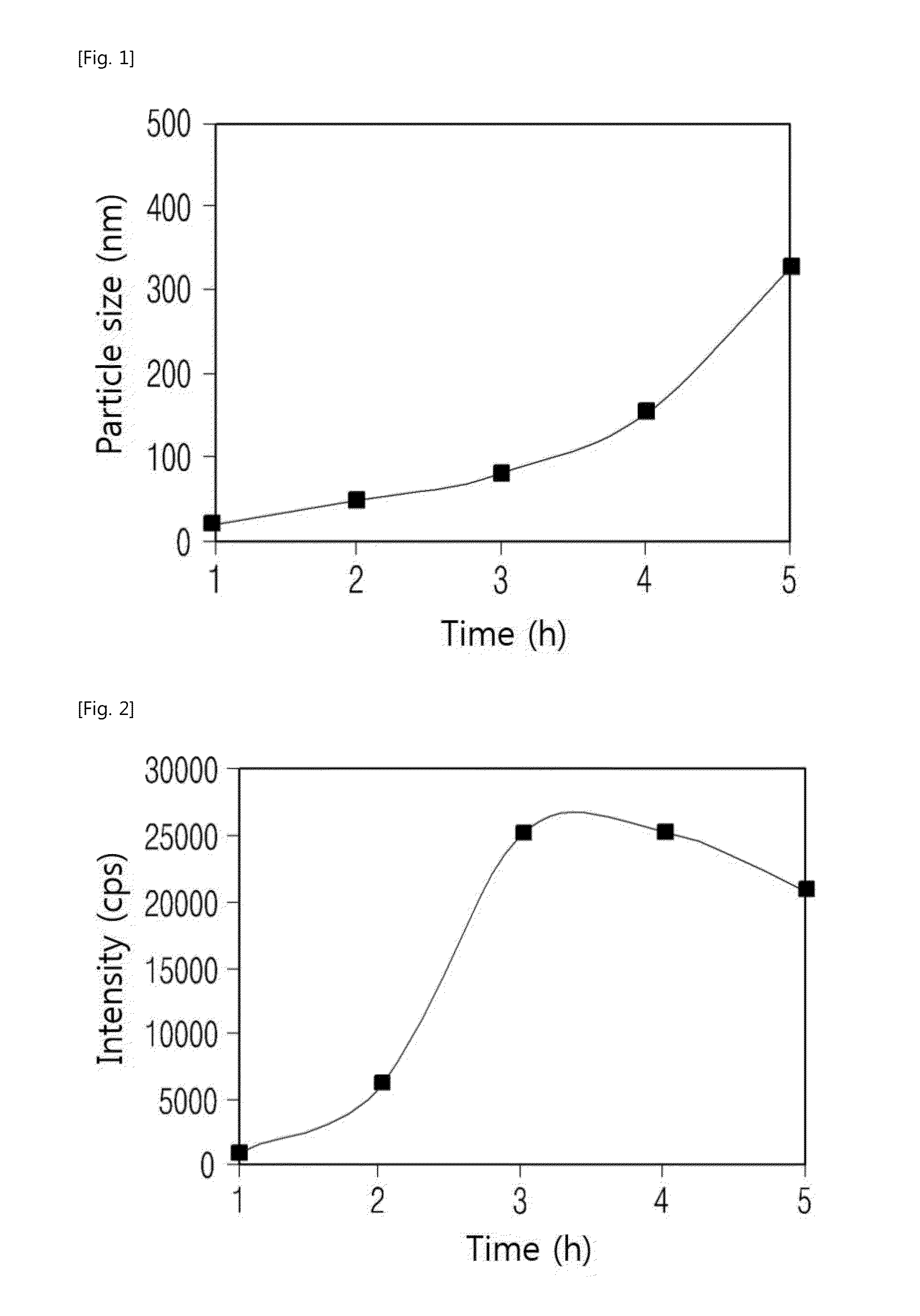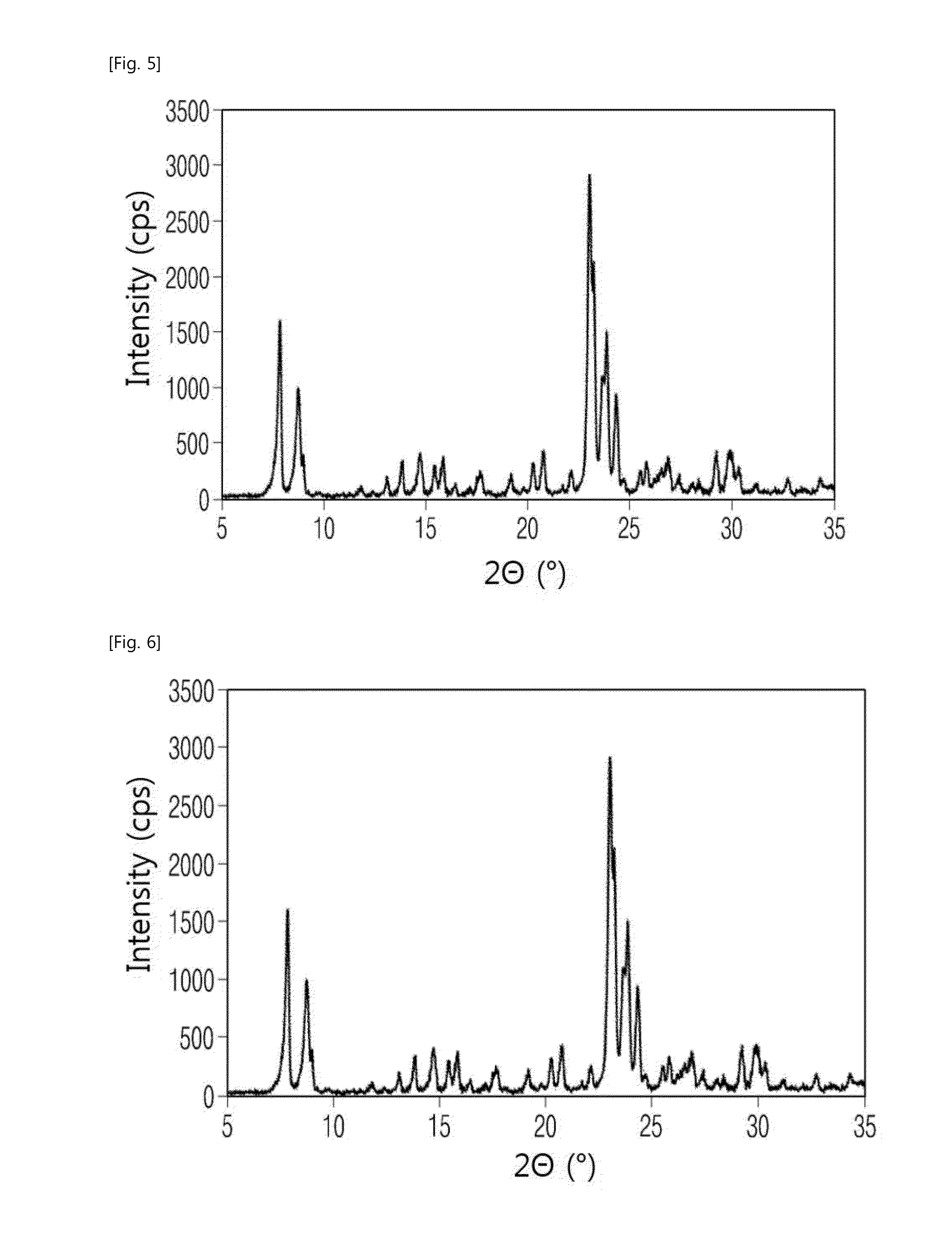Method for producing high silica zeolite using recovered silica filtrate, and high silica zeolite produced according to said method
a technology of high silica zeolite and recovered silica, which is applied in the direction of crystalline aluminosilicate zeolites, mordenite aluminosilicate zeolite, silicon compounds, etc., can solve the problems of secondary costs for treating toxic unreacted organic structure inducing materials in waste water, limited use of natural zeolite, environmental pollution, etc., to reduce waste water treatment cost, reduce energy cost, the effect of shor
- Summary
- Abstract
- Description
- Claims
- Application Information
AI Technical Summary
Benefits of technology
Problems solved by technology
Method used
Image
Examples
example 1
Manufacturing of High Silica Zeolite 1
[0059]Step 1: After the reaction tank was heated to 50° C. and agitated, 1.81 kg of the solution containing 12 wt % of silicic acid (SiO2) and 35.76 kg of distilled water were added and maintained for 30 minutes, and 5.93 kg of the sulfuric acid diluted in the content of 1.75 wt % was added and then maintained for 30 minutes to grow the nucleus. While the reaction tank was heated to the temperature of 70° C., 29.41 kg of the silica filtrate containing 3.5 wt % of the silica (SiO2) and 26.84 kg of 3 wt % of the sulfuric acid were slowly added for 1 hour to synthesize the silica sol including 1.5 wt % of the silica, and the silica sol was left for 2 hours to manufacture the solated agglomerated silica.
[0060]Step 2: The solated agglomerated silica was filtered by the filter press, and then washed to manufacture 7.20 kg of the silica cake.
[0061]Step 3: After 5.09 kg of distilled water and 0.16 kg of 50 wt % of the sodium hydroxide (NaOH) solution we...
example 2
Manufacturing of High Silica Zeolite 2
[0063]ZSM-5 was manufactured by the same method as Example 1, except that 29.41 kg of the silica filtrate and 26.84 kg of 3 wt % of sulfuric acid were slowly added for 2 hours during step 1 of Example 1.
example 3
Manufacturing of High Silica Zeolite 3
[0064]ZSM-5 was manufactured by the same method as Example 1, except that 29.41 kg of the silica filtrate and 26.84 kg of 3 wt % of sulfuric acid were slowly added for 3 hours during step 1 of Example 1.
PUM
| Property | Measurement | Unit |
|---|---|---|
| particle size | aaaaa | aaaaa |
| particle size | aaaaa | aaaaa |
| temperature | aaaaa | aaaaa |
Abstract
Description
Claims
Application Information
 Login to View More
Login to View More - R&D
- Intellectual Property
- Life Sciences
- Materials
- Tech Scout
- Unparalleled Data Quality
- Higher Quality Content
- 60% Fewer Hallucinations
Browse by: Latest US Patents, China's latest patents, Technical Efficacy Thesaurus, Application Domain, Technology Topic, Popular Technical Reports.
© 2025 PatSnap. All rights reserved.Legal|Privacy policy|Modern Slavery Act Transparency Statement|Sitemap|About US| Contact US: help@patsnap.com



